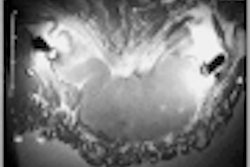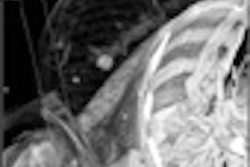Nearly two-thirds of adults experience low back pain at some point in their lives -- it's the second most common reason people visit their physicians. Some say, however, that doctors and radiologists aren't the best sources to call for low back pain diagnoses.
According to an article in Reader's Digest New Choices (RDNC), physicians and radiologists are performing excessive imaging tests and are imprecisely diagnosing low back pain. RDNC sources say this can lead to unnecessary surgeries that offer no guarantees of pain relief.
"There's a tremendous problem with over-testing in this country," said Dr. John D. Loeser in the June issue of RDNC (Reader's Digest New Choices, June 2001, pp. 32-35).
"Radiologists tend to believe that 'normal' equals a picture of an 18-year-old's spine. They label age-related changes that occur in almost everyone over 65 as 'abnormal,'" according to Loeser, a neurosurgeon at the University of Washington.
Radiologists, on the other hand, say imaging tests are needed to determine the cause of low back pain.
"Treating patients with low back pain can be particularly frustrating for clinicians, and imaging is a common diagnostic tool used to gather information and direct therapy," said the authors of an article in Radiology (Radiology 2000, Vol. 217, pp. 321-330).
Radiography is used on patients with diagnoses of systematic disease or trauma. Advanced imaging technologies, such as CT and MRI, are more sensitive than radiography and are, therefore, reserved for patients who are potential candidates for surgery.
"Radiologists typically have a set protocol for the imaging of patients with back pain, but they are more likely to vary that protocol when unusual features of back pain syndrome arise," said Dr. Michael Brant-Zawadzki in the Radiology article.
Dennis C. Turk, Ph.D., a pain researcher at the University of Washington, conversely says imaging tests frequently do not locate the source of low back pain or stumble on other unrelated problems.
"Studies have shown that an MRI or CT scan will show some 'problem' such as a herniated disk or spinal stenosis in one out of three people with absolutely no symptoms of back pain," Turk said in the RDNC article.
Radiologists, however, say diagnostic inconsistencies make it difficult to precisely evaluate and identify the causes of low back pain.
"There is a considerable lack of standardization in terms of diagnoses, both clinically and in the imaging arena. For example, a group of spine surgeons, when given a set of eight specific surgical observations, provided more than 50 diagnostic terms to label the conditions presented," the Radiology authors said.
Compounding the problem are the nonspecific terms radiologists and physicians use to classify the symptoms of low back pain. Since the connection between symptoms and imaging is weak, generic terms, such as sprain or strain, are commonly used to describe back pain.
"The terminology for disk abnormalities at imaging includes a variety of labels, including bulge, herniation, rupture, protrusion, extrusion, and sequestration, that can vary in meaning and importance from patient to patient and from location to location," the Radiology authors said.
Given the lack of standardization, an article in the New England Journal of Medicine advised against frequent use of imaging tests to determine low back pain because "disk and other abnormalities are common among asymptomatic adults," the NEJM authors said (New England Journal of Medicine, February 2001, Vol. 344:5, pp. 363-368).
The authors went on to state that incidental findings of low back pain might lead to "overdiagnosis, anxiety on the part of patients, dependence on medical care, a conviction about the presence of disease, and unnecessary tests and treatments."
A study in the British Medical Journal concurred with the assessment made by the authors of the NEJM article. Dr. Mike Pringle and colleagues from the School of Community Health Sciences in Nottingham, UK studied 394 patients suffering from low back pain for more than six weeks. The patients were randomized into two groups: one received radiographs of the lumbar spine and the other received normal care from physicians.
Researchers found that patients who underwent imaging tests reported more pain than those who had not received x-rays. "Radiography encourages or reinforces the patient's belief that they are unwell and may lead to greater reporting of pain and greater limitation of activities," the article said (British Medical Journal, 2001, Vol. 322, pp. 400-405).
On the other hand, the British researchers reported that the imaging group showed greater satisfaction with their treatment and care than those who had not received radiographs, the study said.
According to a November 29, 2000, article on AuntMinnie.com, researchers from the University of Aberdeen Medical School in Scotland supported the findings by Pringle. Their study, which was based on 145 patients with lumbar spine disorders, found that patients who received CT and MR showed "a significant increase in diagnostic and therapeutic confidence."
By Jennifer LungAuntMinnie.com staff writer
July 11, 2001
Related Reading
Radiography discouraged for patients with low back pain, February 16, 2001
Click here to post your comments about this story. Please include the headline of the article in your message.
Copyright © 2001 AuntMinnie.com



















